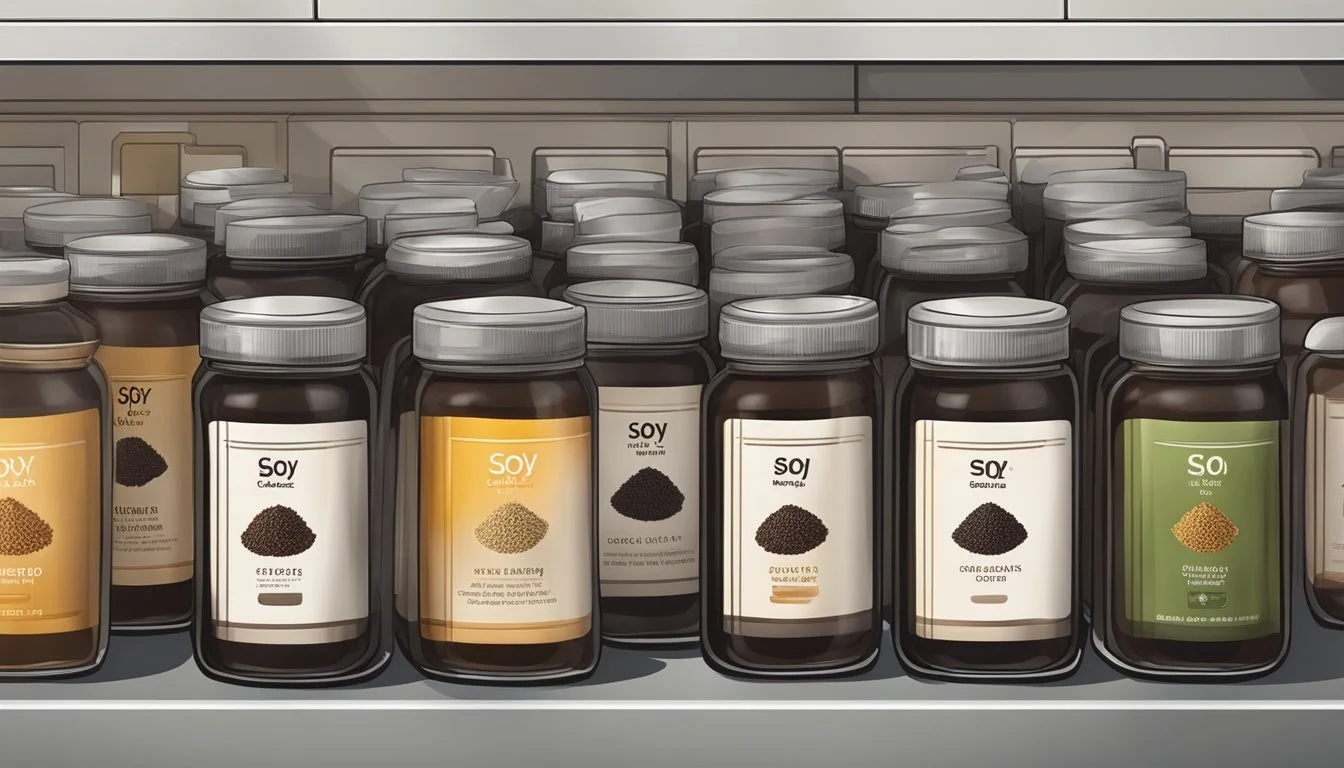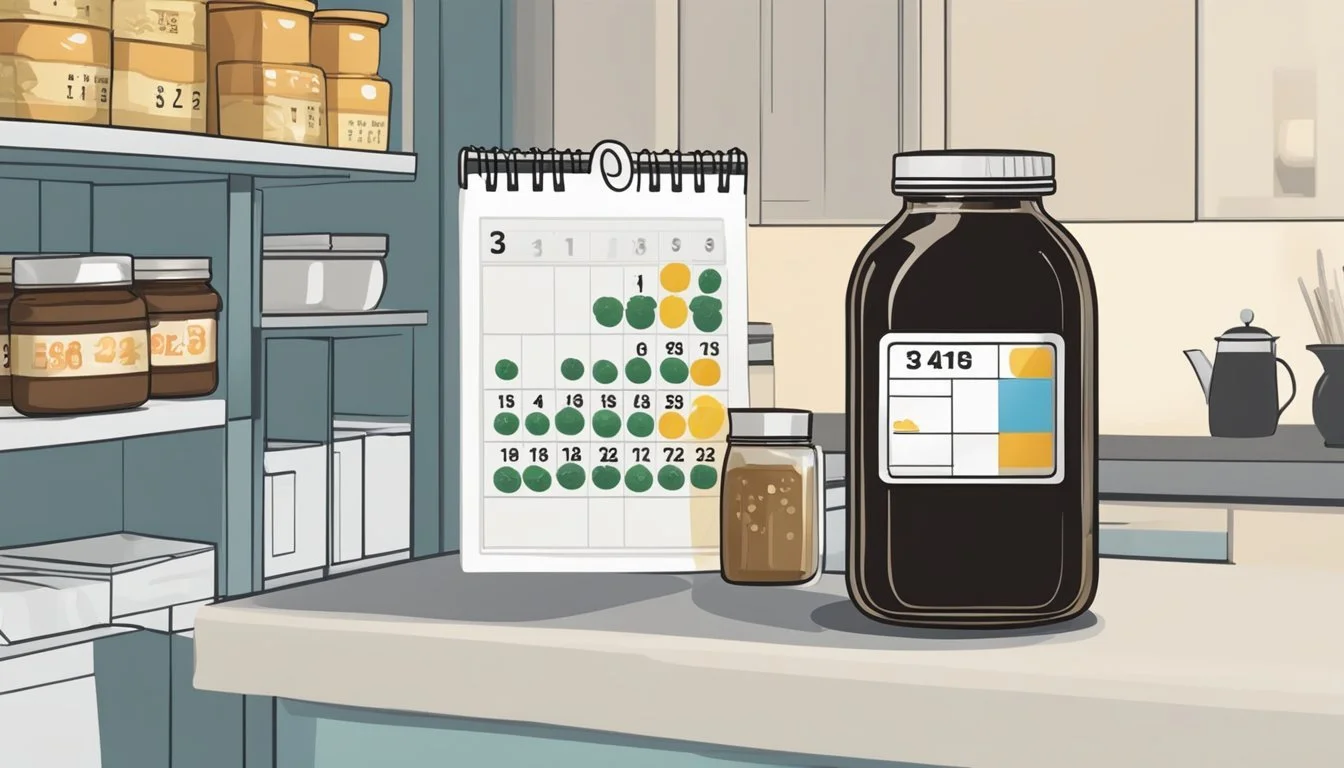How Long Do Soy Sauce Granules Last?
Shelf Life and Storage Insights
Soy sauce is a staple condiment utilized in numerous cuisines, particularly in Asian countries, and has a reputation for its impressive shelf life. Typically made through fermenting soybeans (how long do soybeans last?) with grain, salt, and fermenting agents, soy sauce granules have been introduced as a convenient, dry alternative to their liquid counterpart. These granules, when stored properly, are known to retain their quality over an extended period.
Manufacturers design soy sauce granules for longevity, packaging them in a manner that minimizes exposure to air and moisture, which are the primary contributors to degradation. Unlike liquid soy sauce, which can last for months to years after opening depending on storage conditions, granules can potentially last even longer due to their reduced water activity, which deters microbial growth.
Consumers should store soy sauce granules in a cool, dry place to maintain their flavor and quality. The granules are favored for their ease of use, shelf stability, and ability to be reconstituted into liquid form. Though the exact shelf life can vary depending on the specific product and storage conditions, soy sauce granules are generally expected to sustain their freshness for an extensive period without the additives and preservatives found in some liquid versions.
Understanding Soy Sauce
From its storied origins to its diverse culinary applications, soy sauce is a condiment that has transcended its Asian roots to become a global kitchen staple. Its variety reflects a broad range of flavors, uses, and nutritional profiles.
History and Types
Soy sauce has been integral to Asian cuisines with a history stretching back more than 2,500 years. There are several types of soy sauce to cater to different dietary needs and flavor preferences. These variations include:
Regular soy sauce: A balance of umami, sweet, and salty flavors.
Tamari (how long does tamari last?): Often gluten-free, with a rich umami flavor.
Shoyu: Traditional Japanese soy sauce with a slightly sweet profile.
Sweet soy sauce: Sweetened for a more complex flavor.
Dark soy sauce: Aged longer for a richer taste and used for color.
Light soy sauce: Saltier and used primarily for seasoning.
Low-sodium soy sauce: A healthier alternative with less salt content.
Production Process
The production of soy sauce is an intricate process that involves the fermentation of soybeans, wheat, water, and salt. This mixture is inoculated with yeast and other microorganisms. The fermentation process can take several months to years, transforming the ingredients into a flavorful liquid.
Flavor Profile
Soy sauce is admired for its complex flavor profile, encompassing umami (savory), salty, bitter, sweet, and sour tastes. This balance of flavors makes it a versatile ingredient in various recipes.
Culinary Uses
Soy sauce is used globally as a dipping sauce, marinade, condiment, and seasoning, essential in dishes like sushi (What wine goes well with sushi?), stir-fries, and marinades. Its ability to enhance the taste of ingredients makes it a favorite in both traditional and contemporary recipes.
Health and Nutrition
Soy sauce contains some iron and antioxidants due to the oxidation process during fermentation. However, due to its high salt content, low-sodium options are available. For those avoiding gluten, gluten-free alternatives are also available.
Types of Soy Sauce Explained
Regular soy sauce: Made from both soybeans and wheat.
Tamari: Made primarily from soybeans, often gluten-free.
Shoyu: Traditional Japanese soy sauce, with both soybeans and wheat.
Sweet soy sauce: Includes additional sweetening agents.
Dark soy sauce: Darker and thicker from extended fermentation.
Light soy sauce: Lighter in color and saltier.
Low-sodium soy sauce: Has reduced salt content compared to regular variants.
FAQ Corner
Can soy sauce be used as a substitute for salt? Yes, it adds a similar salty flavor but with added depth.
What is the difference between dark and light soy sauce? Dark soy sauce is aged longer, creating a richer flavor and color, whereas light soy sauce is more delicate and saltier.
Shelf Life of Soy Sauce
Soy sauce is known for its long shelf life, but proper storage is crucial to ensuring it remains safe and flavorful for as long as possible. This section examines the factors that influence how long soy sauce maintains its quality.
Unopened Bottles
Unopened soy sauce typically has a shelf life that ranges from two to three years, and the "best before date" is a useful guideline. It maintains its quality best when stored in a cool, dark place, away from direct light and heat.
After Opening
Once opened, soy sauce can generally last up to two years when refrigerated. While not strictly necessary, refrigeration is recommended to preserve its flavor and freshness.
State Shelf Life Unrefrigerated 1 year Refrigerated Up to 2 years
Indicators of Spoilage
Spoilage in soy sauce can be detected through:
Smell: A sharp, unpleasant odor differs from the sauce's naturally salty and umami scent.
Color: Any significant deviation from its typical dark brown to black color tone.
Mold: Visible mold growth indicates contamination.
Texture: Changes in viscosity, such as becoming syrupy or developing particles, may suggest spoilage.
Factors Affecting Shelf Life
Storage Conditions: Temperature fluctuations and exposure to air can affect quality.
Light and Heat: These elements can degrade the flavor over time.
Fermentation Process: The length and type of fermentation can extend shelf life, with some premium soy sauces fermented for up to two years.
Common Misconceptions
The idea that soy sauce never goes bad is a common misconception. While it remains safe to consume for longer periods, soy sauce can still spoil, especially if stored improperly. It's also incorrectly assumed that darkening of color indicates spoilage, which can be a natural part of aging in soy sauce.
Proper Storage Method
The longevity and quality of soy sauce granules significantly depend on the storage method. Proper storage ensures optimal flavor and freshness.
At Room Temperature
Soy sauce granules should be stored in a cool, dark place such as a pantry, away from direct sunlight and heat. This will help maintain their quality and prevent degradation. An unopened container of soy sauce granules can typically remain at room temperature for extended periods.
Refrigerator Storage
Once opened, it’s beneficial to store soy sauce granules in the refrigerator. This helps to extend their shelf life and preserve their flavor. The consistent, cool temperature of the fridge slows down any potential quality loss.
Freezing Soy Sauce
Although not commonly recommended, one can freeze soy sauce if necessary. Freezing may alter its texture and flavor slightly, so it’s crucial to consider this before choosing this storage option.
Container and Conditions
Irrespective of the storage area, soy sauce granules should be kept in an airtight container. This prevents moisture and other contaminants from affecting the granules. A tightly sealed container also safeguards against the introduction of odors from other foods, especially in the refrigerator.
Maximizing Freshness
To maximize freshness and ensure the granules maintain optimal flavor, they should be protected from light and heat. Consistency in storage conditions is key. Refrain from transferring soy sauce granules between varying temperatures and environments, as this can compromise their integrity.
Using Soy Sauce
Soy sauce is a versatile condiment that adds a rich umami flavor to various dishes. Whether incorporated into cooking as a marinade or seasoning, or used as a dipping sauce, it is an essential flavor enhancer in many recipes.
Culinary Applications
Soy sauce is integral to numerous dishes. Cooking: It's commonly used in stir-fries and marinades, imbuing food with depth and savoriness. Dipping Sauce: It serves as a dipping sauce for sushi and other appetizers, providing a salty and complex taste profile.
Stir-fries: Soy sauce can transform a straightforward mix of vegetables and protein into a dish bursting with flavor.
Marinades: When used as a marinade, soy sauce tenderizes meat while imparting an inviting aroma and taste.
Soy Sauce as a Flavor Enhancer
Soy sauce is celebrated for its unique ability to enhance the flavor of a wide array of recipes. It adds a distinct umami flavor that cannot be easily replicated with other seasonings.
Aroma: The condiment is noted for its appealing aroma, which can elevate the sensory experience of a meal.
Taste: The rich taste of soy sauce can round out the flavors in a dish without overpowering its natural essences.
Alternative Uses
Soy sauce is not only for Asian cuisine; it can substitute for salt in various recipes or provide an alternative taste dimension when alternatives are necessary.
Substitutes: Gluten-free soy sauce and tamari sauce are excellent alternatives for those with dietary restrictions.
Alternatives: For a sweeter flavor profile, teriyaki sauce can be used, while light and dark soy sauces cater to specific preferences in flavor intensity and color.
Light Soy Sauce: Ideal for a subtle hint of soy and less coloration in dishes.
Dark Soy Sauce: Provides a richer, more caramelized flavor suitable for stews and red-cooked meats.
Safety and Consumption
When it comes to soy sauce granules, understanding their quality, identifying the signs of spoilage, and following proper consumption tips help ensure safety and enjoyable taste.
Assessing Soy Sauce Quality
Quality is paramount when assessing whether soy sauce granules are suitable for consumption. Fresh soy sauce granules should have a robust and pleasant aroma and a rich taste. Any deviation from the typical sensory attributes can be an indicator that the soy sauce is going bad. A lack of intense scent or an off-flavor are good reasons to inspect further.
When to Discard
Soy sauce granules should be discarded if:
There are visible signs of mold or clumping.
The aroma has changed to an unpleasant smell.
The taste is sharply different from when it was fresh. If any of these signs are present, it is no longer safe to consume the granules.
Consumption Tips
To ensure soy sauce granules maintain their quality, one should:
Store in a cool, dry place away from direct sunlight.
Keep the container tightly sealed when not in use. Soy sauce granules are generally safe to consume well past their printed expiration date as long as they are stored correctly and show no signs of spoilage.
FAQs and Tips
In this section, we'll address common questions regarding the longevity and preservation of soy sauce granules, offering practical tips to maximize shelf life.
Understanding Expiration Dates
Soy sauce granules come with an expiration date, which typically signifies the time until which the product is expected to maintain optimal quality. Best before dates are an indicator of quality, not safety, meaning that soy sauce may still be safe to consume past this date if stored correctly.
How Long Does Soy Sauce Last?
The shelf life of soy sauce granules hinges on storage conditions. Unopened, these can retain quality for approximately 2 to 3 years. Once opened and exposed to air, it's best to consume them within 6 months to ensure their distinctive flavor remains intact.
Regular soy sauce: Up to 2 years
Tamari (gluten-free): Up to 2 years
Shoyu: Up to 2 years
Dark soy sauce: Up to 3 years
Light soy sauce: Up to 2 years
Extended Storage and Preservation
To maximize the longevity of soy sauce granules, one should:
Keep them in an airtight container to reduce exposure to air.
Store them in a cool, dark place to mitigate degradation from light and heat.
Consider refrigeration, which although not essential, can help preserve flavor quality for longer periods.
Choosing the Right Soy Sauce
Different types of soy sauce granules vary in shelf life and flavor profile. Dark soy sauce, with its more robust flavor, often has added preservatives that can extend its shelf life, while light soy sauces lack these preservatives and should be consumed more promptly.
Dark soy sauce: Longer shelf life, stronger flavor
Light soy sauce: Shorter shelf life, more delicate flavor
Tamari (how long does tamari last?): Ideal for those seeking a gluten-free option
Shoyu: Offers a balanced flavor, with a shelf life similar to regular soy sauce
By adhering to these guidelines and tips, consumers can enjoy the rich flavors of soy sauce granules while ensuring they remain fresh and usable for as long as possible.








